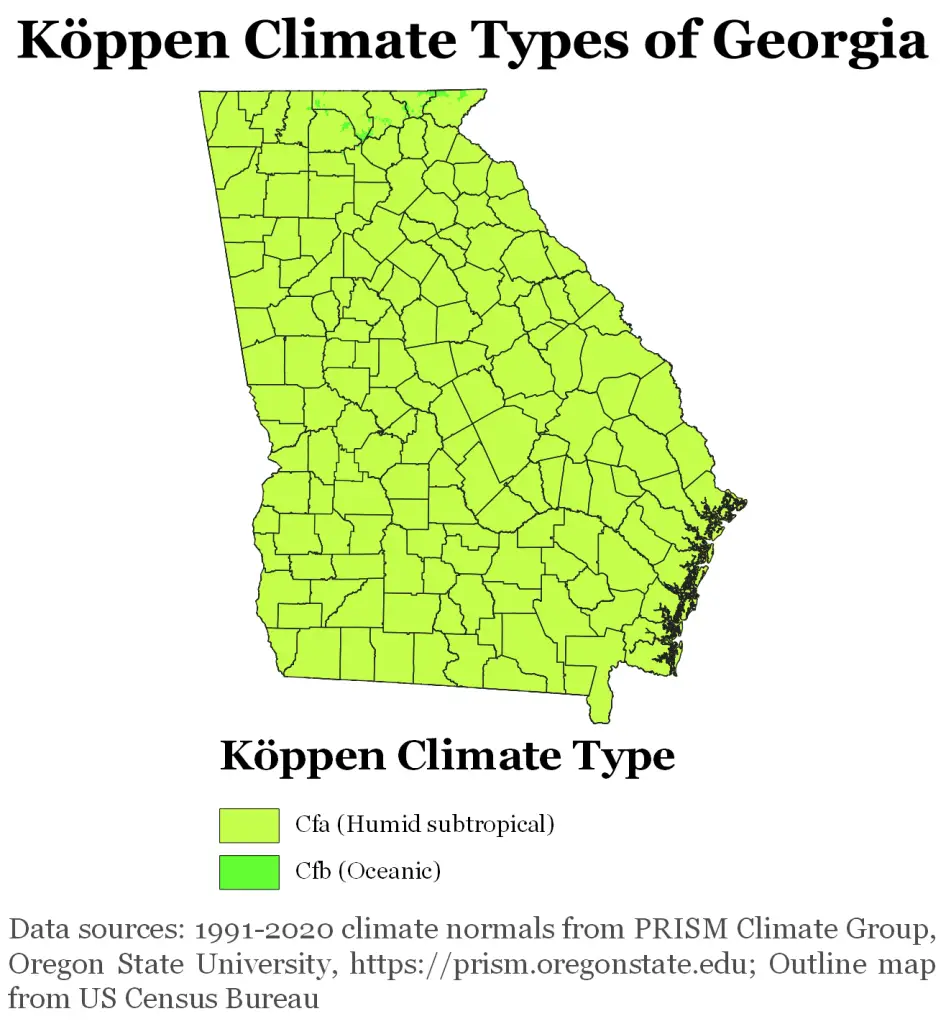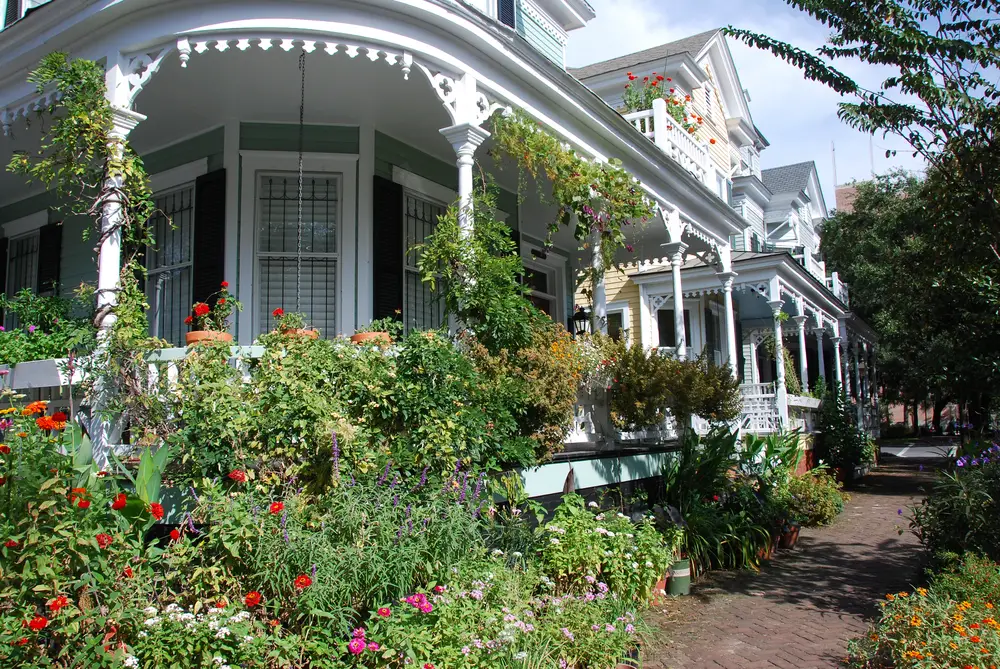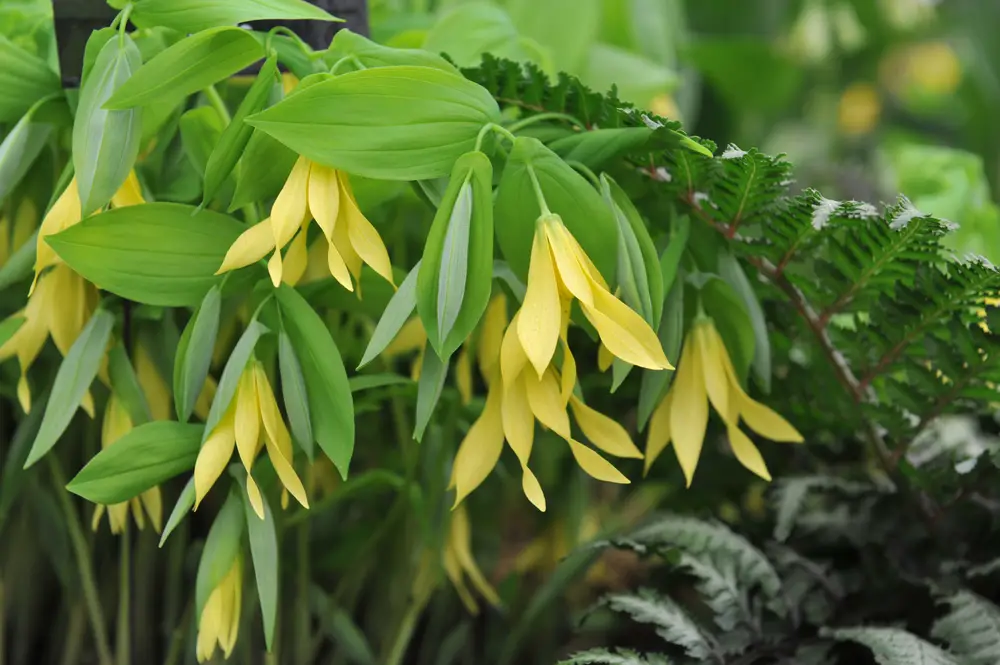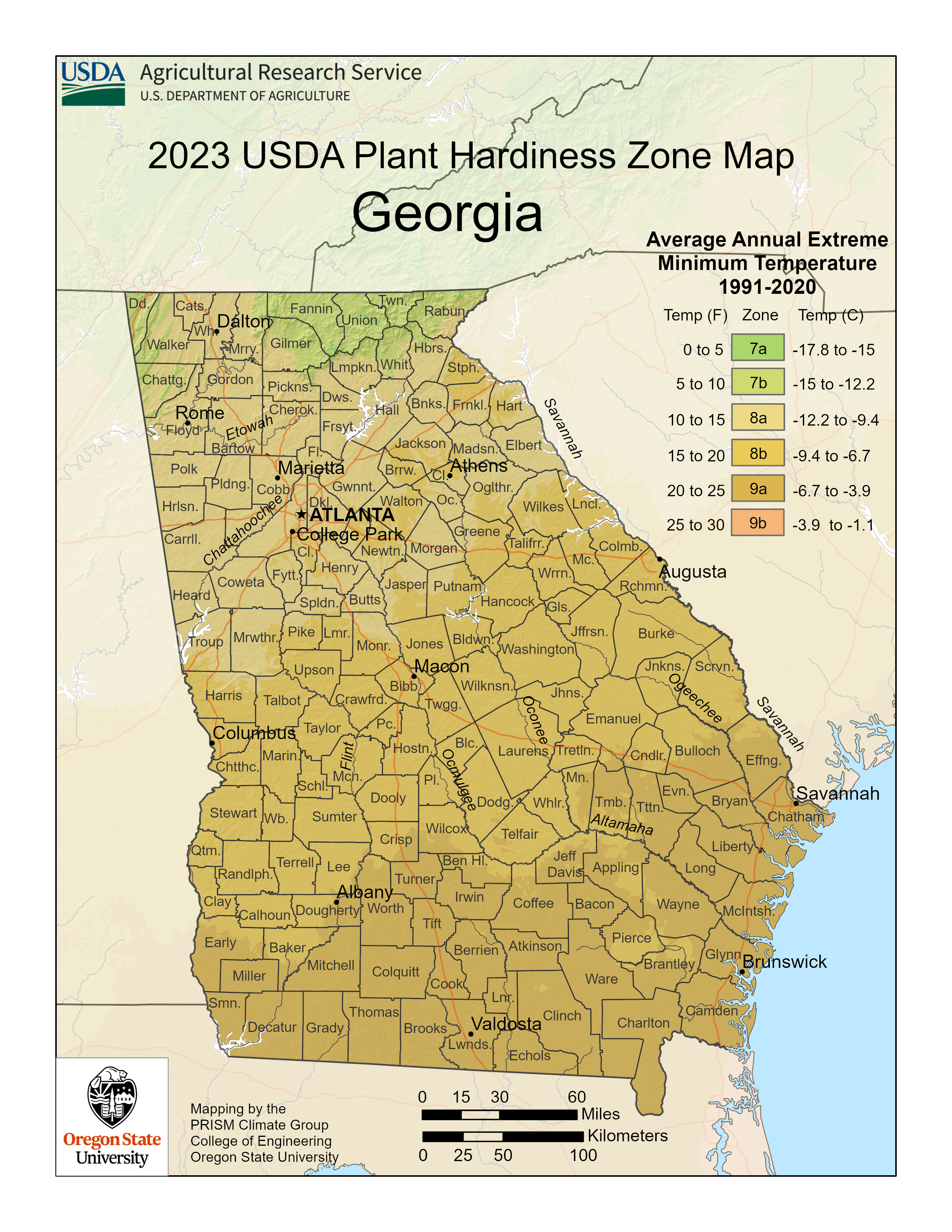Georgia Plant Hardiness Zones
| USDA Hardiness Zone | Average Minimum Extreme Winter Temperature Range Fahrenheit (°F) Celsius (°C) | Average Last Frost Date Range In Spring (Beginning Of The Growing Season) | Average First Frost Date Range In Autumn (End Of The Growing Season) |
|---|---|---|---|
| 7a | 0°F to 5°F -17.8°C to -15°C | Early April | Late October to early November |
| 7b | 5°F to 10°F -15°C to 12.2°C | Early April | Early December to mid-December |
| 8a | 10°F to 15°F -12.2°C to -9.4°C | Mid to late March | Mid to late November |
| 8b | 15°F to 20°F -9.4°C to -6.7°C | Mid to late March | Mid to late November |
| 9a | 20°F to 25°F -6.7°C to -3.1°C | Early to mid-March | Early December to mid-December |
| 9b | Early to mid-November | Mid to late February | Early to mid-March |
Georgia Growing Conditions
General Climate

Georgia’s overall climate is humid subtropical. This means the majority of the state experiences mild, short winters and long, hot summers. This is optimal for longer growing seasons with more plant diversity.
The Chattahoochee River divides Georgia into two growing regions.
The northwest is the first. It’s described as a mountain region, falls into hardiness zones 7a and 7b, and brings cooler temperatures and higher chances of snow and ice during the winter season.
The rest of the state ranges from zones 8 to 9 and, therefore, experiences a longer growing season with hot summers and short, mild winters, with much less snowfall than zone 7.
Georgia’s overall precipitation is moderate throughout the year, and the state experiences a higher chance of tornadoes and tropical hurricanes.
Microclimates
USDA plant hardiness zones are an important starting point for your garden, but you’ll also need to consider microclimates.
Microclimates are areas where specific conditions create a climate different from the climate they’re situated in.
Buildings, fences, paved areas, or short hills and valleys can create these microclimates.
They can be as small as a space in your backyard or as large as a city.
In other words, learn about your local conditions from local experts to see if your garden falls into a microclimate.
Extreme Weather
Tornadoes And Hurricanes
High winds are common in Georgia. Depending on your location in the state, this can look like tornadoes in the north or hurricanes in the south. Tropical cyclones are also possible in the southern coastal parts of the state. These storms can include severe thunder, heavy rainfall, high winds, and even large hail, all of which can result in damage to your property and garden.
Planting native plants with deep root systems can help mitigate against harsh weather systems like tornadoes and hurricanes. Adding proper drainage systems or rain gardens to your property can also help with heavy rainfall and flooding.
Snow And Ice
In the northwest portion of the state, the winter season can bring higher chances of snow and ice. You can easily mitigate this type of extreme weather with forethought and winter prep during the fall season.
Choose cold-hardy plants and get into winter stratification. This is where you sow seeds in fall, as they require a period of deep cold in order to germinate! This is an economical approach to growing a garden from seed and is especially a handy growing technique when creating native wildflower meadows.
Heat Waves And Drought
Georgia can experience heat waves and drought during the long, hot summers. This can negatively impact your garden if you don’t implement proper cooling techniques. Making sure your garden is irrigated is an important step in this process, as some plants require more water than others, especially during the hot, dry months.
Choosing the right type of plants is helpful in beating the heat. Native plants are more resilient and require less water to grow. Learn what plants can handle the heat and plant them in your garden.
Growing Season
The Chattahoochee River divides the state into two growing regions. These regions vary in first frosts and overall growing season length. The northwestern portion of the state’s first frost is in early October, while the southern coast experiences it in early December.
The average growing season is longer on the coast, which can range from over 270 days, while the growing season in the north is much shorter, with 180 days or less.
Georgia Gardening Tips

Plant Selection
Plant selection is one of the best ways to mitigate damage during tornado season, heat waves, and cold winters. Native plants are more resilient within their particular hardiness zone and are more likely to survive the extremes within their range.
Choosing plants with strong root systems can not only help during tornado season but also help build strong soils in the hilly, eroded north part of the state.
Prepare For Heat Waves
Having the appropriate tools during a heat wave can reduce the loss of life in your garden. Shade cloths are a great way to protect your plants from the hot afternoon sun. They work best in raised garden boxes, greenhouses with proper airflow, and small hoop houses.
Additionally, putting your favorite plants in movable containers and bringing them inside during the severe weather is a good way to keep them alive.
Do Winter Garden Prep
Mulching can be a beneficial way to keep your garden cozy during the winter months. Using products like leaf mulch cannot only add insulation for your plants’ root systems but also help build the soil naturally, creating a more biodiverse environment with healthier soils!
Consult With Local Professionals
Consulting with local gardening professionals allows you to benefit from their experience with your area’s conditions, the plants that do well there, and overall best practices.
Georgia Plant Suggestions

Trees
- American snowbell (Styrax americanus)
- Bigleaf magnolia (Magnolia macrophylla)
- Downy serviceberry (Amelanchier arborea)
Shrubs
- American beautyberry (Callicarpa americana)
- Oakleaf hydrangea (Hydrangea quercifolia)
- Mapleleaf viburnum (Viburnum acerifolium)
Flowers
- Bellwort (Uvularia perfoliata)
- Birdfoot violet (Viola pedata)
- Dutchman’s breeches, blue staggers (Dicentra cucullaria)
Vegetables
- Chocolate habanero pepper (Capsicum chinense)
- Sunrise bumble bee tomato (Solanum lycopersicum)
- Cucamelon (Melothria scabra)
Herbs
- Tulsi (Ocimum sanctum)
- Chives (Allium schoenoprasum)
- Sage (Salvia officinalis)
Spices
- Garlic (Allium sativum)
- Turmeric (Curcuma longa)
- Ginger (Zingiber officinale)
Fruits
- Dwarf pawpaw (Asimina parviflora)
- Crabapple (Malus angustifolia)
- Persimmon (Diospyros virginiana)
Succulents
- Wild stonecrop (Sedum ternatum)
- Hens and chicks (Sempervivum tectorum)
- Prickly pear cactus (Opuntia humifusa)
Disclaimer
Any of the above can change and is not exhaustive.
Treat anything above like a good starter guide. Then use that as a foundation as you consult with local gardeners, professionals, forecasts, guides, and organizations.

